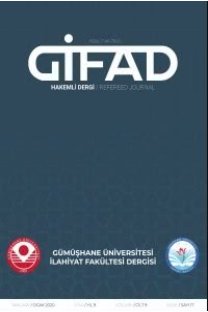HALKLA İLİŞKİLER EĞİTİMİNDE DİJİTALLEŞME EĞİLİMLERİ: MÜFREDAT ÜZERİNE BİR İÇERİK ANALİZİ
Halkla ilişkiler, Müfredat, Dijitalleşme
DIGITALISATION TRENDS IN PUBLIC RELATIONS EDUCATION: A CONTENT ANALYSIS OF THE CURRICULUM
Keywords: Public relations, Curriculum, Digitalization,
___
- Alexander, D. (2004). Changing the Public Relations Curriculum: A new challenge for educators. PRism, 2(1), p.1-7.
- Bakan, Ö. (2014). Halkla İlişkiler Eğitiminde Teori-Pratik Dengesi Bakımından Türkiye İçin Bir Model Önerisi, Journal of Selcuk Communication, 2(2), s. 64-72. https://doi.org/10.18094/SI.58560
- Balasundaram, I., Aggarwal, R., ve Darzi, L. A. (2010). Development of a Training Curriculum for Microsurgery, British Journal of Oral and Maxillofacial Surgery, 48(8), p.598-606.
- Chaikhamwang, S., Montri, W., ve Anantasomboon, K. (2018). “The Development of Public Relations for School of Computer and Information Technology Chiangrai Rajabhat University Using Virtual Reality Technology”, 2018 22nd International Computer Science and Engineering Conference (ICSEC) , p. 1-4, 21-24 November 2018, IEEE.
- Coşkun, Y. D. (2015). Promoting Digital Change in Higher Education: Evaluating the Curriculum Digitalisation, Journal of International Education Research (JIER), 11(3), p. 197-204.
- Creswell, J. (2014). Nicel, Nitel ve Karma Yöntem Araştırmaları: Araştırma Deseni. (Çeviri Editörü), Selçuk Beşir Demir, Ankara: Eğiten Kitap.
- ISSN: 2146-3301
- Yayın Aralığı: 2
- Başlangıç: 2011
- Yayıncı: Mustafa Cankut
İLETİŞİM ETKİLERİ AÇISINDAN REKLAMDA YARATICILIĞIN KARŞILAŞTIRILMASI
Murat TOPAL, Rasime Ayhan YILMAZ
KURUMSAL GÜVEN ve ÇALIŞAN İLİŞKİSİNDE KURUM İÇİ İLETİŞİMİN ROLÜ
Filiz BALTA PELTEKOĞLU, Nazan AYAN
SOSYAL MEDYADA ARAŞTIRMA GÖREVLİSİ ALGISI: EKŞİ SÖZLÜK ÖRNEĞİ
Zeynep UMUR ERKUŞ, Ezgi SUMBAS
SOSYAL MEDYADA POPÜLİST SÖYLEM VE POLİTİK PSİKOLOJİ: 2019 TÜRKİYE YEREL SEÇİMLERİ ÖRNEĞİ
KİŞİLERARASI İLETİŞİMDE EMOJİ KULLANIMI: WHATSAPP ÖRNEĞİNDE BİR İNCELEME
HALKLA İLİŞKİLER ALANINDAKİ MESLEKİ BEKLENTİLER: İŞ İLANLARI ÜZERİNDEN BİR ANALİZ
Türk Medyasının Depremle İmtihanı: Kahramanmaraş Depremini Afet Haberciliği Üzerinden Değerlendirmek
KUMAR BAĞIMLILIĞINA YÖNELİK KAMU SPOTLARININ JAKOBSON’UN İLETİŞİM İŞLEVLERİ BAĞLAMINDA ANALİZİ
Mehmet Ozan GÜLADA, Yasemin KESKİN YILMAZ
PEIRCE VE BARTHES'IN GÖSTERGEBİLİM MODELLERİNİN REKLAM ARAŞTIRMALARINDA KULLANIMI
